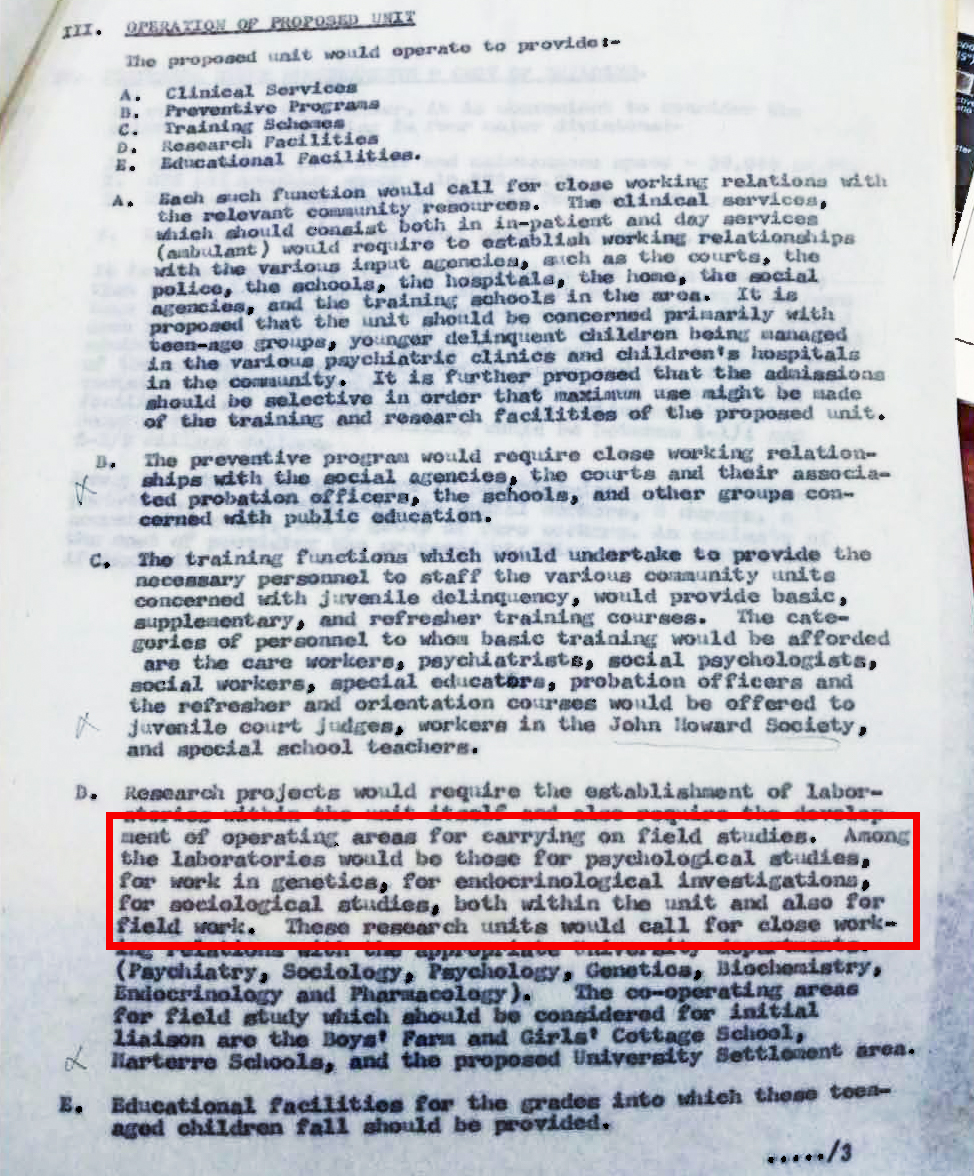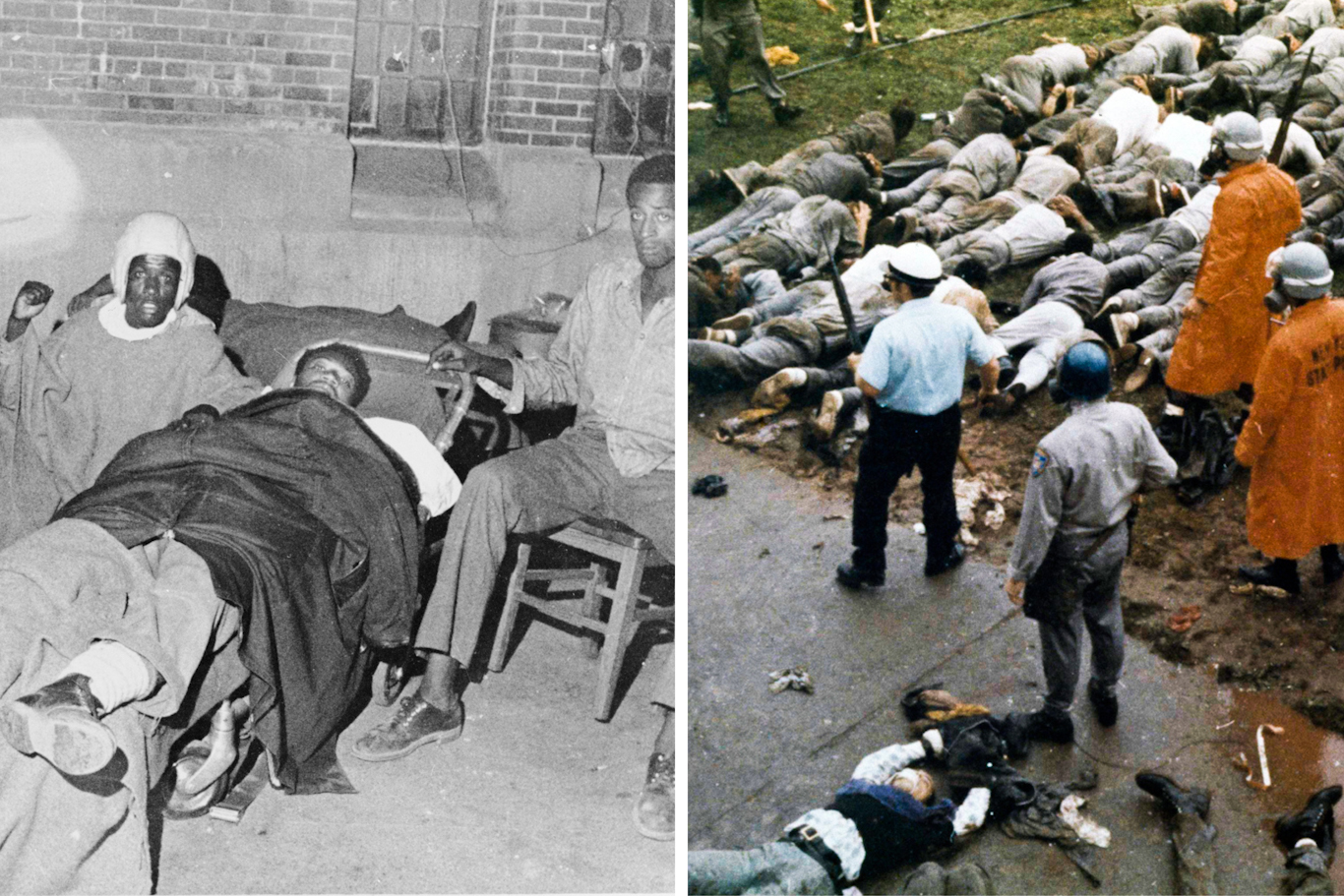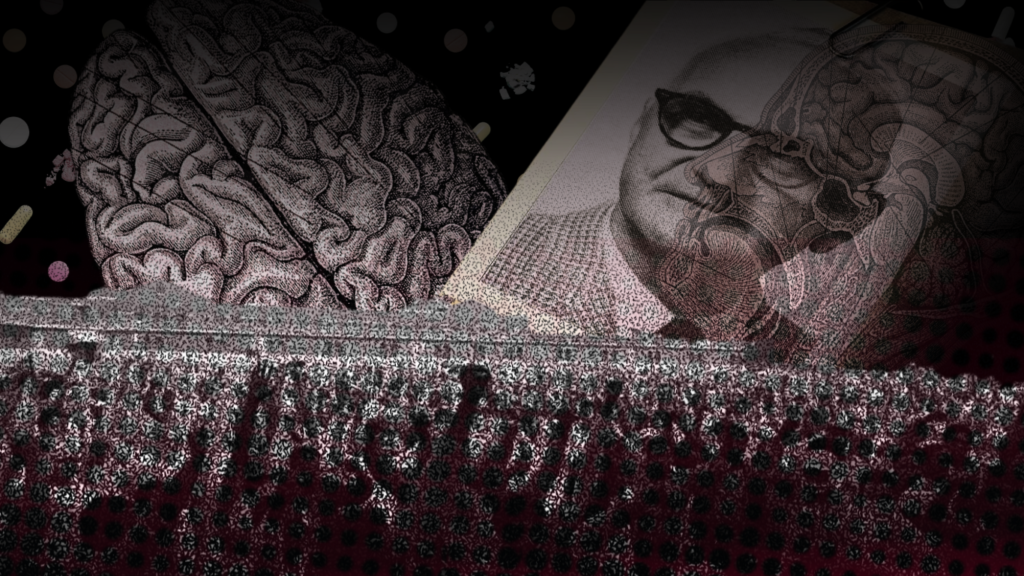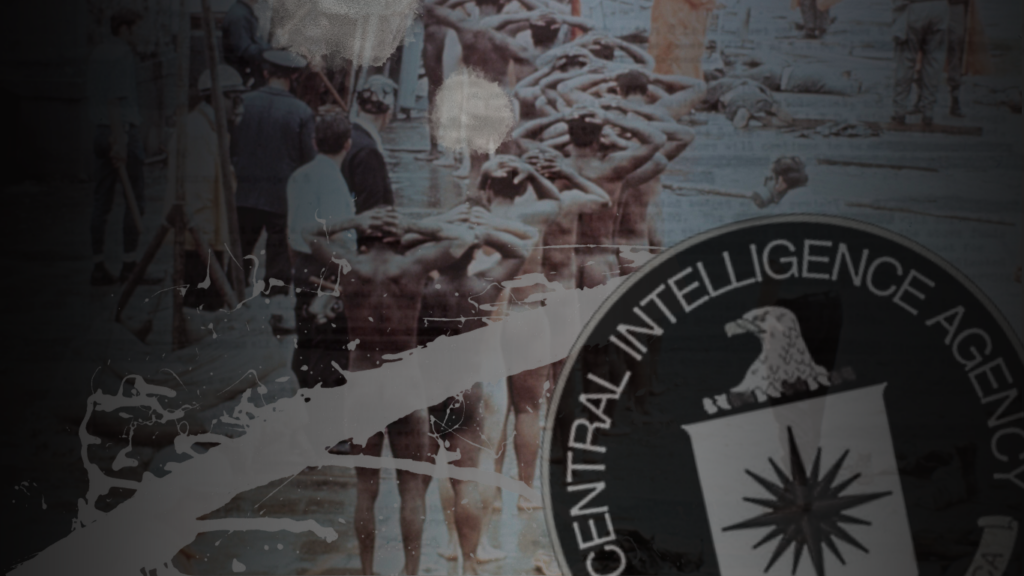New Files Reveal MKUltra’s Terrifying Reach: Ethnic Bioweapons, Mind Control and Disturbing Experiments
ANGLO AMERICA, 31 Jul 2023
Kit Klarenberg | MintPress News – TRANSCEND Media Service
25 Jul 2023 – In a groundbreaking investigation, renowned anthropologist Orisanmi Burton has blown the lid off a dark chapter in CIA history. Classified Agency files, recently obtained through Freedom of Information laws, expose shocking ties between the infamous MKULTRA program and nightmarish experiments on prisoners of color within the United States.
Burton’s findings expose MKULTRA’s sinister mission to develop psychological warfare and behavioral manipulation tactics specifically aimed at people of color under the guise of “counterinsurgency.” Unbelievably, these barbaric trials were conducted during a turbulent era when numerous U.S. government agencies relentlessly sought to crush the civil rights movement, and prisons brimmed with political radicalism.
This disturbing revelation puts the CIA’s actions into sharp focus, revealing a ruthless bid to quell Black resistance both on the streets and behind bars. But it doesn’t stop there. Burton’s disclosures raise urgent and profound questions about the far-reaching impact of these operations—both in the past and, unsettlingly, even today.
Among the most haunting questions is whether the Agency actively pursued a race-specific mind control weapon—an idea that strikes at the very core of ethical and moral boundaries.
As the nation grapples with this revelation, one thing is certain: Burton’s exposé demands answers and accountability for the harrowing atrocities committed in the name of national security. The truth must be unveiled, and justice served for those who suffered under the relentless grip of MKULTRA’s clandestine horrors.
“Penetration of Defenses”
Of the many medical research facilities abused by the CIA for the purposes of MKULTRA, Allan Memorial Institute, a psychiatric hospital in Montreal, Quebec, looms perhaps the largest and most darkly.
It was here that from 1957-1964, the Agency secretly operated the program’s “Subproject 68” under the leadership of notorious psychiatrist Ewen Cameron, the Institute’s founder. Cameron sought to “depattern” minds via a technique known as “psychic driving.” It entailed drugging unconsenting, unwitting patients with incapacitating cocktails of psychedelic substances, then subjecting them to electric shocks while they listened to hours of recorded, looped audio.
Cameron hoped to render his subjects’ minds a blank slate onto which new behaviors, thoughts, memories, and personalities could be surreptitiously imposed from the outside. It also served the purpose of interrogation. In a 1958 edition of the journal “Psychoanalytic Quarterly,” he boasted this technique could be used for “penetration of defenses, elicitation of hitherto inaccessible material […] changing of attitudes and setting up a dynamic implant.”
A Disturbing Nexus: The Rockefeller Connection
Fast forward to 1966, when then-New York Governor Nelson Rockefeller, whose family foundation played a central role in the establishment of Cameron’s Institute, initiated a chilling partnership. Consultants from McGill University—the Institute’s parent—were brought in to conduct “research” on the “criminally insane” in New York’s prisons. Officially, the mission was to find innovative methods to deter recidivism and understand the causes of criminality through “experimental studies.” But was there more to this collaboration than met the eye?

Coincidentally—or perhaps not—the same period saw a disturbing trend emerge. Black Americans expressing revolutionary views were increasingly labeled as suffering from severe mental health conditions. Psychiatrist Jonathan Metzl’s groundbreaking work, “The Protest Psychosis,” uncovered how medical research articles began portraying “Negro men” as having a uniquely dangerous form of schizophrenia compared to their “White” counterparts.
Come 1968, the American Psychiatric Association’s Diagnostic and Statistical Manual of Mental Disorders underwent an alarming update, adding “hostility” and “aggression” as prominent symptoms of schizophrenia. The implications were profound: civil rights activists daring to resist were at risk of being diagnosed and institutionalized. Prisoners refusing to bend to oppressive jail regimes could be conveniently labeled as “criminally insane.”
A Playground for Disturbing Experiments
Nestled 25 miles from New York’s northern border with Quebec, the infamous Dannemora State Hospital for the Criminally Insane took center stage in Rockefeller’s ominous initiative. At the helm of this partnership was Canadian psychiatrist Bruno Cormier, a longtime clinician at the Allan Memorial Institute during the 1950s and 60s. Together with the notorious Ewen Cameron, they hatched a chilling plan for a “Pilot Centre for Juvenile Delinquency”—a place that would delve into the darkest corners of human behavior.
The envisioned center would include laboratories “for psychological studies, for work in genetics, for endocrinological investigations, for sociological studies.” Cormier was particularly keen for the institution to “bring light on behavioral problems” and “bridge the research gap between juvenile delinquency and adult criminality.” Dannemora State Hospital represented an opportunity to achieve these objectives via other means.

By 1969, McGill consultants, under the guise of “training,” had transformed prison guards into practitioners of hypnosis and aversion therapy techniques. One grim “therapy” session was subsequently sketched by an observer:
Correctional officers [became] therapists. It is an admirable undertaking to make them semi-professionals, but I have seen these former correctional officers practice aversion therapy with prisoners. The prisoners start gagging as they retrace the steps of their crimes. The scene was quite revolting both for those who watched and those who took part, yet there is still no evidence that anybody has been cured.”
In 1990, Dr. Douglas Lipton, director of the Narcotic and Drug Research Institute, exposed Dannemora’s chilling mission to obliterate inmates’ identities and mold them into obedient pawns. In testimony to Congress, he laid bare the devastating efficacy of these efforts, which left an indelible mark on the lives of those they ensnared.
Behind closed doors, Bruno Cormier reached out to every prison warden in New York state, urging them to send their most hardened offenders to become subjects of this wicked venture. The wardens were more than willing to comply, eager to rid themselves of their most problematic inmates.
Assembling a group of 50 of the most troubled souls—described by Dr. Lipton as “the worst group you had ever seen”—the Allan team subjected them to a year of MKULTRA torture. The torment they endured stripped them down to their very cores, leaving them vulnerable to resocialization attempts bordering on mind-altering manipulation.
A year after being released from Dannemora, following a year of treatment, just two had returned to the facility. The rest, it seems, had been successfully reduced to “blank slates”, as Cameron originally sought, and their minds successfully reprogrammed from the ground up. Dr. Lipton concluded:
What it does is it takes you back to kind of a kindergarten level and then brings you back up.”
“Behavior Modification for Political Ends”
Echoes of Cameron’s infamous “psychic driving” likewise emerged in the disturbing research of McGill psychologist Ernest G. Poser. Delving into patient reactions under methohexitone-induced sleep and cross-cultural differences in pain tolerance, Poser’s chilling methods didn’t spare inmates, and they were subjected to unimaginable horrors in the name of research.
His work frequently employed “deceptive means and what seemed like torture instruments,” including a blood pressure monitor “with sharp, hard rubber projections sewn into the pressure cuff,” which he used to test a patient’s “pain tolerance.” He was among the McGill specialists tasked with experimenting on inmates in New York state. In 1968, he probed whether prisoners deemed “sociopaths” suffered from an adrenaline deficiency, preventing them from learning cautionary lessons from “fear-producing experiences.”
Putting the theory to the test, Poser and his team injected inmates diagnosed as “sociopathic” with adrenaline, then subjected them to electric shocks. One of his students was seemingly so swept up in the lack of ethical restrictions over their work they proposed an experiment in which prisoners were strapped to electroconvulsive therapy devices and told they were taking part in a competition. The “loser” would receive a shock at a level set by their opponent:
Each subject will have 20 trials on which he will lose on a predetermined 50% of the trials, but which to him will apparently be random.”
From September 9 to 13, 1971, a mass riot broke out in New York state’s notorious Attica prison. Inmates were motivated by abysmal conditions, including mass overcrowding, systemic violence, and racism. As U.S. historian Howard Zinn recorded, “Prisoners spent 14 to 16 hours a day in their cells, their mail was read, their reading material restricted, their visits from families conducted through a mesh screen, their medical care disgraceful, their parole system inequitable, racism everywhere.”
The uprising was brought to an end by a blood-soaked massacre, sanctioned personally by Nelson Rockefeller. Hundreds of New York State Police troopers, Bureau of Criminal Investigation personnel, deputy sheriffs, park police, and correctional officers stormed occupied areas of Attica through a smog of tear gas, indiscriminately opening fire on inmates with shotguns. In all, 33 died, and 85 were injured. Many prisoners who were not resisting, as well as individuals the rioters had taken hostage, were among them.

Conspicuously, New York’s formal partnership with McGill ended almost immediately thereafter, and Dannemora State Hospital was rebranded as the Adirondack Correctional Treatment Education Center. In the manner of a hydra, though, it became home to a new behavior modification initiative – the Prescription (Rx) Program. In April 1972, Walter Dunbar, New York’s deputy corrections commissioner, said the initiative focused on prisoners who perpetrate “overt acts that incite, agitate, and provoke other inmates to militant, radical, and antisocial activities.” As Orisanmi Burton writes:
“Such statements link the program to plantation discourses that pathologize Black resistance, while implicating prison authorities in the use of behavior modification techniques for political ends: counterinsurgency.”
“Brainwashing Camps of Totalitarian Societies”
In August 2022, MintPress News revealed how Black Americans were disproportionately targeted by the CIA’s monstrous mind control machinations. Many MKULTRA trials appeared to have been expressly conducted to gauge potentially varying reactions to psychedelic drugs in Black and White participants. That the CIA had a specific – or greater – interest in the effect of certain substances on people of color, rather than the general civilian population, was an obvious suspicion.
However, academic experts consulted by MintPress News at the time were dismissive of that proposition. They argued MKULTRA’s distinct racial character simply reflected the compositions of institutions targeted by the CIA, and concomitant a lack of value attached to Black test subjects by the Agency, and its assets within the medical community.
Burton’s findings strongly suggest that, far from merely focusing on people of color due to their profusion in prisons and medical centers, and racist contempt, the CIA did indeed seek to determine optimal drugs for targeting Black Americans, if not other ethnic groups.
Once the Rx Program was underway, prisons across New York – including Attica – began eagerly applying its techniques to their inmates. This extended to surreptitiously dosing them with uncertain substances, among other “experimental methods,” for the purposes of “pacification and control.” A contemporary account of institutional maltreatment at Napanoch’s Eastern Correctional Facility described how “drugs secretly placed in food turn prisoners into vegetables.”
Almost all inmates there were transferred from other jails and promised “educational and vocational training” once they arrived, but none ever materialized. Strikingly, “a large percentage” of them were considered to be politically conscious or “agitators.”
One prisoner who suspected his food was being spiked with tranquilizers due to feeling chronic fatigue conducted a test, deliberately starving himself. He “started feeling better immediately” – “the drowsiness went away, and I felt stronger and more alert.” Another compared the “sustained lethargy” he experienced at the prison to his time at Dannemora.
Suspiciously, too, prisoners were prohibited from drawing their own water from drinking fountains in the mess hall. They had to request it from guards, who would “always go to a concealed kitchen area” to retrieve the orders, which “consistently [tasted] different from tap water.”
From WWII Experiments to MKULTRA’s Legacy
If the CIA was hunting for an ethnic bioweapon for the purposes of mind control, it was not alone in Washington. During World War II, the U.S. Army conducted grotesque chemical experiments on its own Asian, Black, and Puerto Rican troops to test varying reactions to the same substances. U.S. citizens of Asian descent were explicitly chosen as proxies for Japan’s civilian and military population to see how mustard gas and other heinous munitions would affect the enemy.
The same thinking and dynamic, of course, applied to the Army’s Black test subjects. Fast forward to November 1970, and the in-house journal Military Review published an article by geneticist Carl A. Larson titled “Ethnic Weapons.” Approvingly noting “an enzyme deficiency in southeastern Asian populations” made residents of the continent “susceptible to a poison to which Caucasoids are largely adapted,” he advocated exploring how other enzyme inhibitors, such as BZ and its chemical relative LSD, afflicted “different ethnic populations.”
In 1974, a government committee slammed the Rx Program’s “logic and vision” as evoking “the specter of the resocialization, rethinking, and brainwashing camps of totalitarian societies.” The previous year, then-CIA director Richard Helms had ordered MKULTRA to be wound down and its entire file trail destroyed due to fears the Agency might be subject to official scrutiny in the wake of the Watergate scandal.
Even though MKULTRA was officially dismantled, its cruel techniques lived on, as codified by CIA and U.S. military interrogation and torture doctrine. As MintPress News reported in April 2022, these malevolent methods were mercilessly applied at black sites and Guantánamo Bay, sowing the seeds of false testimony to justify the excesses of the War on Terror.
The darkness of MKULTRA lingers still, calling for urgent answers and transparency. America’s Black community deserves nothing less than the full extent of these operations exposed; culprits held accountable, and rightful compensation for survivors. As the shadows of the past stretch into the present, the demand for truth rings louder than ever, and justice becomes an undeniable imperative.
______________________________________________
Kit Klarenberg is an investigative journalist exploring the role of intelligence services in shaping politics and perceptions.
Go to Original – mintpressnews.com
Tags: Anglo America, CIA, Culture of Violence, Direct violence, Human Experiment, Prisons, Structural violence, Torture, USA
DISCLAIMER: The statements, views and opinions expressed in pieces republished here are solely those of the authors and do not necessarily represent those of TMS. In accordance with title 17 U.S.C. section 107, this material is distributed without profit to those who have expressed a prior interest in receiving the included information for research and educational purposes. TMS has no affiliation whatsoever with the originator of this article nor is TMS endorsed or sponsored by the originator. “GO TO ORIGINAL” links are provided as a convenience to our readers and allow for verification of authenticity. However, as originating pages are often updated by their originating host sites, the versions posted may not match the versions our readers view when clicking the “GO TO ORIGINAL” links. This site contains copyrighted material the use of which has not always been specifically authorized by the copyright owner. We are making such material available in our efforts to advance understanding of environmental, political, human rights, economic, democracy, scientific, and social justice issues, etc. We believe this constitutes a ‘fair use’ of any such copyrighted material as provided for in section 107 of the US Copyright Law. In accordance with Title 17 U.S.C. Section 107, the material on this site is distributed without profit to those who have expressed a prior interest in receiving the included information for research and educational purposes. For more information go to: http://www.law.cornell.edu/uscode/17/107.shtml. If you wish to use copyrighted material from this site for purposes of your own that go beyond ‘fair use’, you must obtain permission from the copyright owner.


